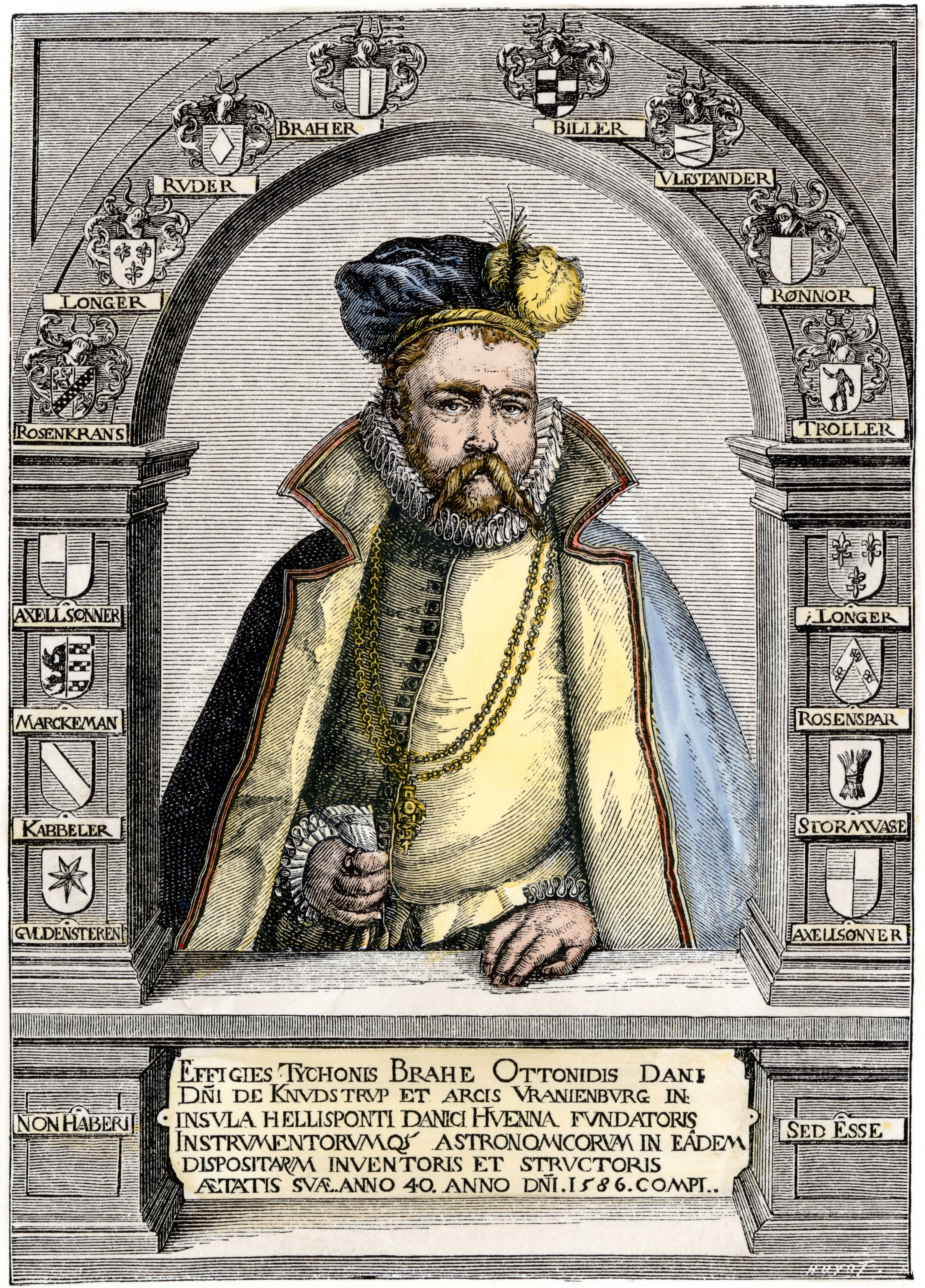Brahe, Tycho, << brah or BRAH hee, TEE koh >> (1546-1601), was a Danish astronomer. Tycho developed a systematic approach for observing the planets and stars. He stressed the importance of making such observations on a regular basis. The telescope had not yet been invented, and so Tycho used his eyesight and such instruments as astrolabes and quadrants to estimate the positions of celestial objects. His observations were far more precise than those of any earlier astronomer.

Tycho’s observations of planetary motion revealed that the tables then in use to predict the positions of the planets were inaccurate. His sighting of a supernova (type of exploding star) in 1572 helped disprove the ancient idea that no change could occur in the heavens beyond the orbit of the moon.
Like many astronomers of his time, Tycho refused to accept the Copernican theory of the solar system. According to this theory, Earth and the other planets move around the sun. Tycho reasoned that if Earth revolved around the sun, he should have been able to measure changes in the positions of the stars resulting from Earth’s movement. He did not realize that such changes were too small for his instruments to detect. However, Tycho’s observational data later enabled Johannes Kepler, a German astronomer and mathematician, to confirm the Copernican theory.
Tycho was born on Dec. 14, 1546, in Knudstrup (then a Danish city but now in Sweden), near Malmo. As a member of the nobility, he attended universities in Denmark, Germany, and Switzerland. Tycho built an elaborate observatory on the island of Hven (now called Ven), where he made many of his observations. He died on Oct. 24, 1601.
